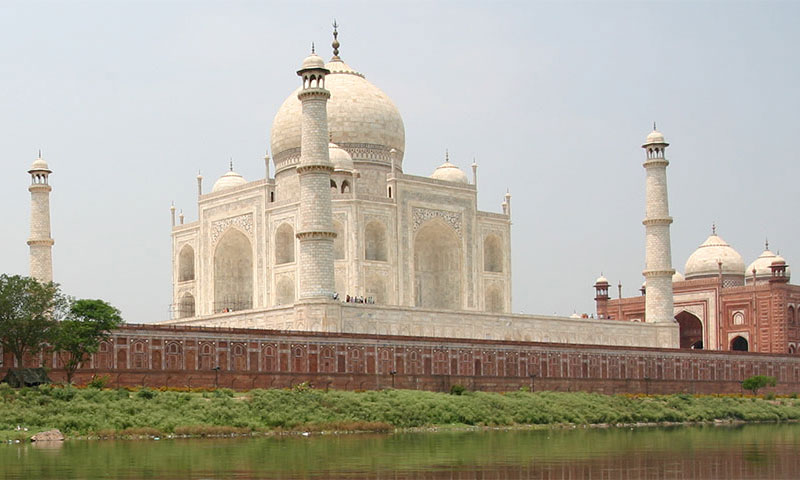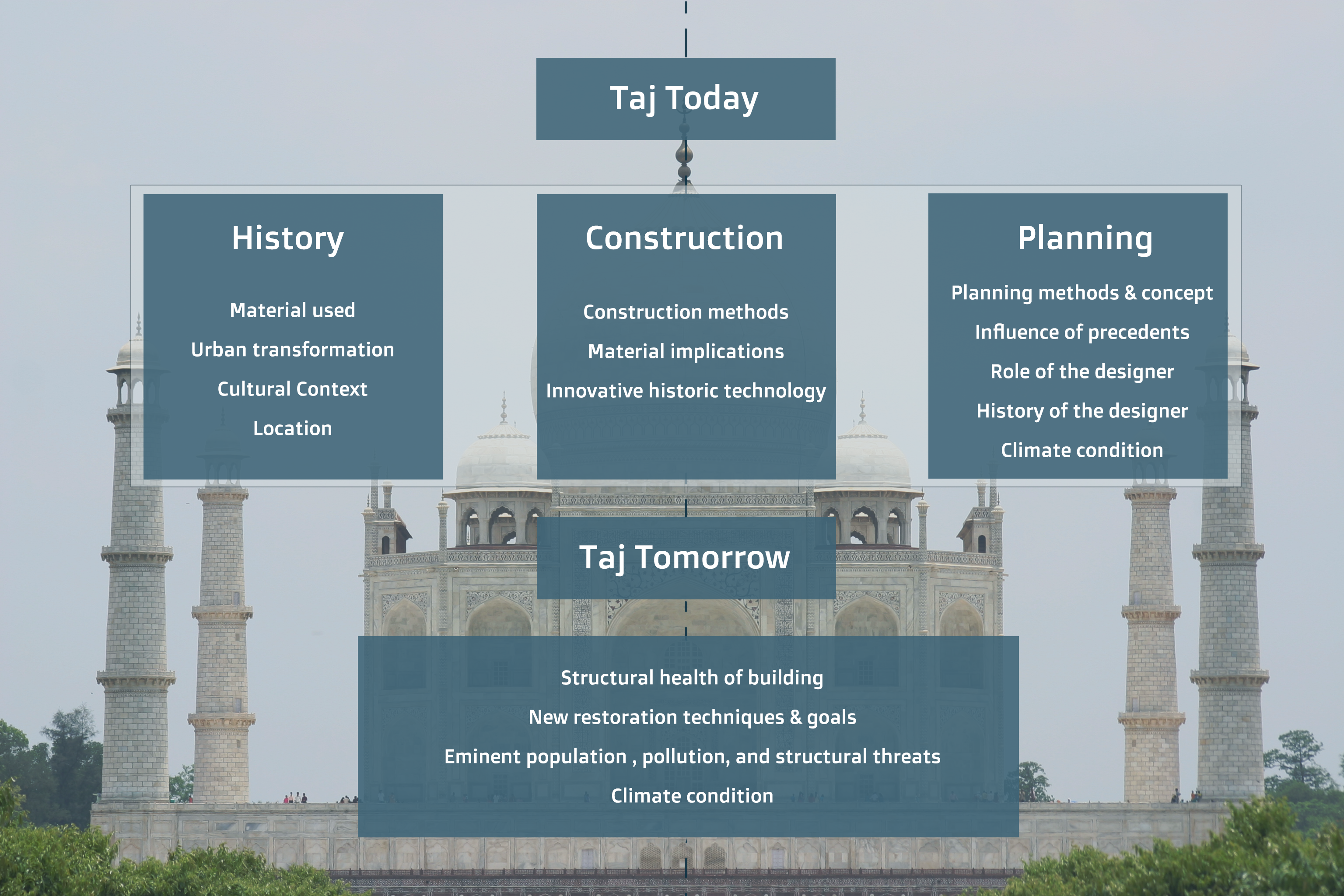|
The crown jewel of Mughal mausoleum architecture |
||||
|
The Taj Mahal, completed in 1643, was the only Mughal mausoleum that was built by a ruler for his own purposes during his own lifetime. This may serve as one of the reasons that the sheer scale, delicacy of material usage, and overall harmonic aesthetics are more prevalent in this structure than any other Mughal mausoleum. Built to honor his wife, Mumtaz Mahal, Shah Jahan built not only one, but two major mausoleums during his lifetime, one for his wife and another for his father Jahangir. It was under the rule of Shah Jahan, that it is said that Mughal architecture entered its classical phase. |
||||
|
Exploring sacred building proportions and context |
||||
|
The intentional use of design principles in sacred buildings demonstrates the desire to express the complex relationship between the human and the divine through architecture. Evidence of careful composition and study of these principles is seen during Mughal rule in India, through the progressive understanding of construction of predecessors to the Taj Mahal. Constructed successively, these structures became the paradigm by which all other successors were judged. As building type, the Taj Mahal primarily served the function of veneration, and secondarily, exhibits governing authority. Identification and analysis of the principles used to compose paradigmatic structures help describe the devices with which to continue the discourse of sacred architecture, so that designers are equipped with the necessary understanding and tools to compose equally commendable, contemporary centers for veneration. The overall site plan of the Taj Mahal is more complex than any of its precedents. To elucidate why Taj became the most refined building in the history of tomb designs in India, the various components used to create tombs are examined and their alteration to perfection studied. The components include:
|
||||
|
Structure of the project (credit: DHARMA) |
||||
|
Connecting preservation with envisioning the future |
||||
|
The period of Mughal occupation has come to be known as the Renaissance age of India, and it led to the construction of some of the most magnificent freestanding monumental sacred buildings in the country. During this time, principles of geometry, proportion and scale were the guiding elements of sacred Indian architecture.
The Making of Taj MahalThe Taj Mahal was the only Mughal mausoleum that was built by a ruler for his own purposes during his own lifetime. This may be one of the reasons that the sheer scale, delicacy of materials and overall harmonic aesthetics are more striking in this structure than any other Mughal mausoleum. Mughal architecture is said to have entered its classical phase under the rule of Shah Jahan, who built the Taj Mahal to honor his wife, Mumtaz Mahal. The intentional use of design principles in sacred buildings demonstrates the desire to express the complex relationship between the human and the divine through architecture. The overall site plan of the Taj Mahal is more complex than any of its precedents. To elucidate why Taj became the most refined building in the history of tomb designs in India, we are examining the various components used to create tombs and and studying their alteration to perfection. The components we investigate include:
To learn more about DHARMA and our research, visit our About page and Project pages for India and Italy.
|
||||
|
Gates of Taj Mahal and surrounding city context (credit: DHARMA) |
||||





